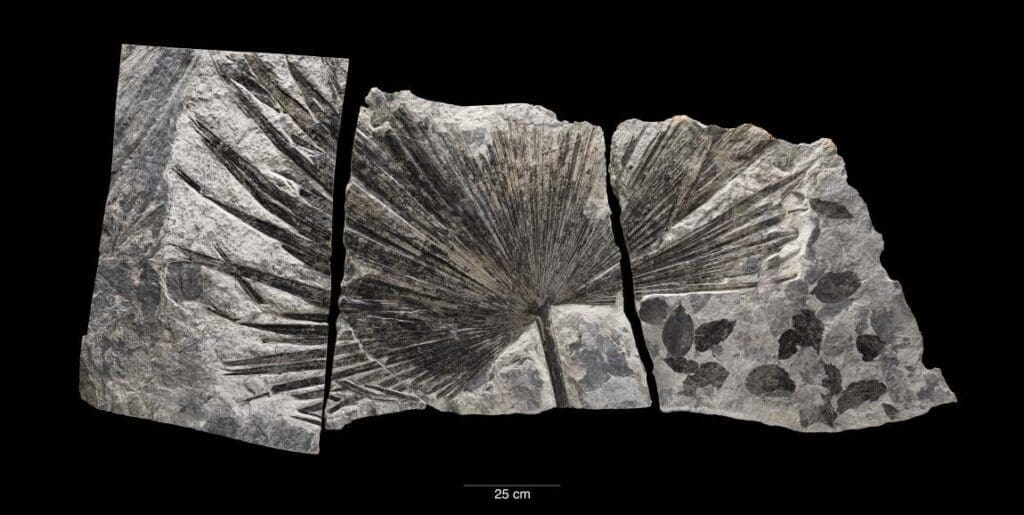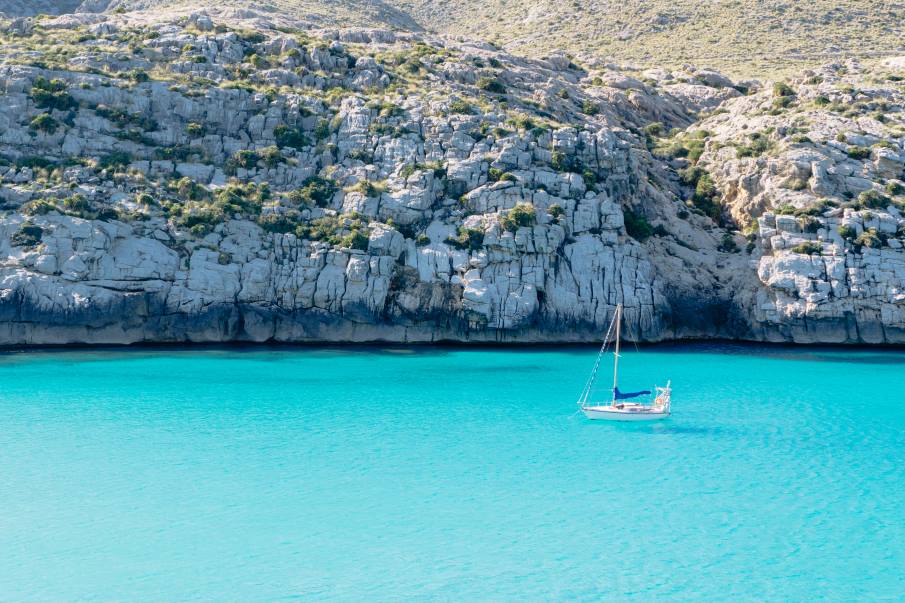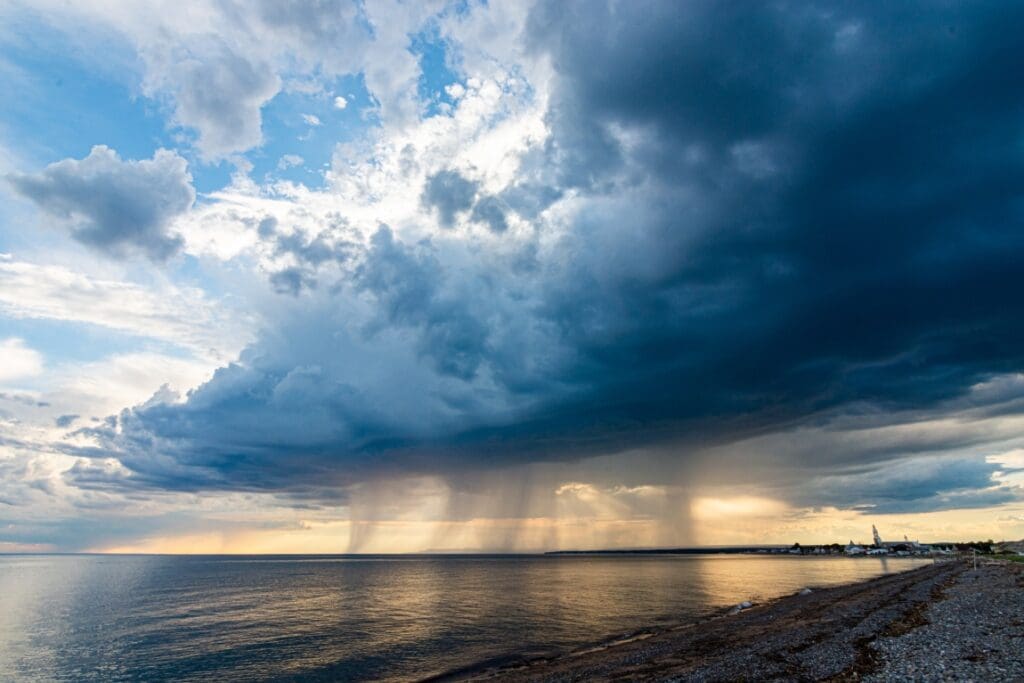Summary:
Iceberg calving – when large chunks of ice break off a glacier and plunge into the sea – is a major driver of Greenland’s rapid ice loss. A new study published in Nature reveals that the impact of falling ice does more than create dramatic surface splashes. It also generates powerful underwater waves that intensify melting at the glacier’s base.
An international team led by the University of Zurich and the University of Washington used a 10-kilometer fiber-optic cable on the seafloor near the Eqalorutsit Kangilliit Sermiat glacier in southern Greenland to measure the process in unprecedented detail. The technology, called Distributed Acoustic Sensing (DAS), detected both calving-induced tsunamis and slower, towering internal waves that travel between layers of water long after the surface has calmed. These internal waves mix warmer subsurface seawater with glacial meltwater, accelerating erosion and further ice break-off.
The findings reveal a previously unknown feedback loop in which calving amplifies submarine melt, fueling further retreat. Understanding this process is vital, as the Greenland ice sheet holds enough water to raise global sea levels by about seven meters. The study also shows the challenges of monitoring such hazardous environments, where satellite observations cannot capture what happens beneath the surface.
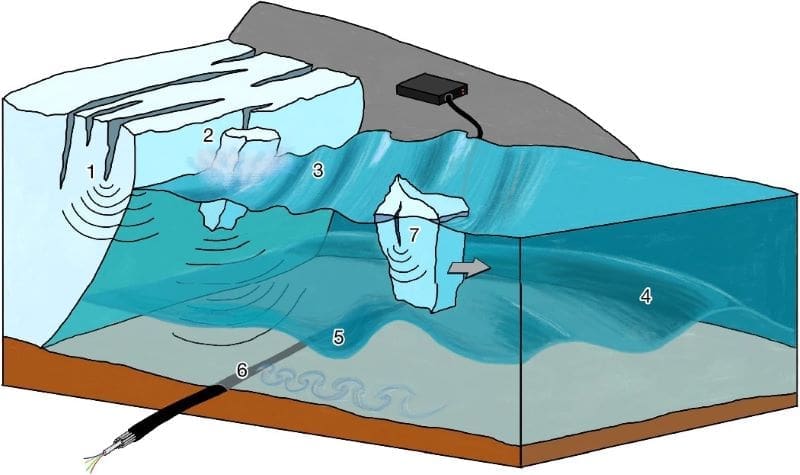
Falling ice drives glacial retreat in Greenland
Iceberg calving occurs when masses of ice break away from the edge of glaciers and crash into the ocean. This process is one of the major drivers of the rapid mass loss currently affecting the Greenland ice sheet. An international research team led by the University of Zurich (UZH) and the University of Washington (UW) has now used fiber-optic technology to measure for the first time how the impact of falling ice and its subsequent drift is driving the mixing of glacial melt with warmer subsurface seawater.
“The warmer water increases seawater-induced melt erosion and eats away at the base of the vertical wall of ice at the glacier’s edge. This, in turn, amplifies glacier calving and the associated mass loss from ice sheets,” says Andreas Vieli, a professor at UZH’s Department of Geography and co-author of the study. Vieli heads the Cryosphere cluster, one of six clusters in the interdisciplinary GreenFjord project in southern Greenland, supported by the Swiss Polar Institute. These new insights into the dynamics of glacier ice and seawater are featured on the cover of the latest issue of Nature.
Wave measurements using fiber-optic cable on seafloor
As part of the GreenFjord project, UZH and UW were joined by other Swiss institutions to conduct an extensive field study into the dynamics of glacier calving. The researchers deployed a ten-kilometer-long fiber-optic cable onto the seafloor across the fjord of the Eqalorutsit Kangilliit Sermiat glacier. This large, fast-flowing glacier in South Greenland releases around 3.6 km3 of ice into the sea every year – almost three times the volume of the Rhône glacier at the Furka mountain pass in Switzerland.
The researchers used a technology called Distributed Acoustic Sensing (DAS), which detects ground motion by monitoring cable strain caused by crevasses forming in the ice, falling ice blocks, ocean waves or changes in temperature. “This enables us to measure the many different types of waves that are generated after icebergs break off,” says lead author Dominik Gräff, a UW postdoctoral researcher affiliated with ETH Zurich.
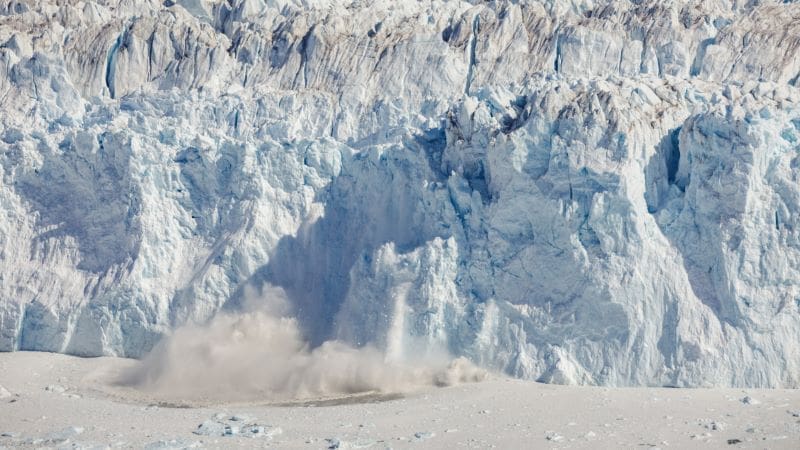
Underwater waves amplify glacier melt and erosion
Following the initial impact, surface waves, known as calving-induced tsunamis, surge through the fjord, initially mixing the upper layers of water. As seawater in Greenland’s fjords is warmer and denser than glacial meltwater, it sinks to the bottom.
But the researchers also observed other waves propagating between density layers long after the splash, when the surface had stilled. These underwater waves, which can be as tall as skyscrapers, are not visible from the surface but prolong water mixing, bringing a steady supply of warmer water to the surface. This process increases melting and erosion at the glacier’s edge and drives ice calving. “The fiber-optic cable allowed us to measure this incredible calving multiplier effect, which wasn’t possible before,” says Gräff. The data collected will help document iceberg calving processes and improve our understanding of the accelerating loss of ice sheets.
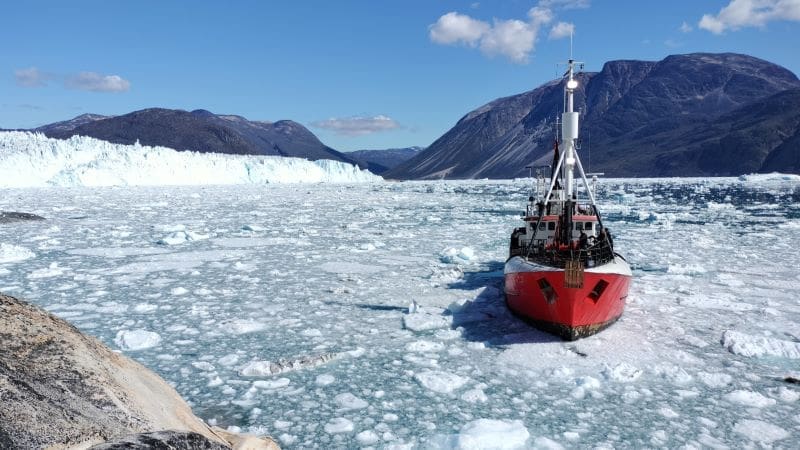
A fragile and threatened system
Scientists have long recognized the significance of seawater and calving dynamics. However, measuring the relevant processes on site presents considerable challenges, since the vast number of icebergs along the fjords poses a constant risk from falling chunks of ice. In addition, conventional remote sensing methods based on satellites cannot penetrate below the water’s surface, where interactions between glaciers and seawater take place. “Our previous measurements have often merely scratched the surface, so a new approach was needed,” says Andreas Vieli.
The Greenland ice sheet is a vast body of ice that covers an area roughly 40 times the size of Switzerland. If it were to melt, it would release enough water to raise global sea levels by approximately seven meters. The substantial meltwater volumes released by retreating glaciers can weaken ocean currents such as the Gulf Stream, with far-reaching consequences for Europe’s climate. In addition, the loss of these calving glaciers also affects the local ecosystem of Greenland’s fjords. “Our entire Earth system depends, at least in part, on these ice sheets. It’s a fragile system that could collapse if temperatures rise too high,” warns Dominik Gräff.
Journal Reference:
Gräff, D., Lipovsky, B.P., Vieli, A. et al., ‘Calving-driven fjord dynamics resolved by seafloor fibre sensing’, Nature 644, 404–412 (2025). DOI: 10.1038/s41586-025-09347-7
Article Source:
Press Release/Material by University of Zurich
Featured image: View of the fjord and the three-kilometer-wide calving front of Eqalorutsit Kangilliit Sermiat in southern Greenland. The fiber-optic cable was laid a few hundred meters from the ice wall through the 300-meter-deep water on the seabed. In the foreground is the UZH radar device, which measures calving events and ice movements in order to interpret the data from the fiber-optic cable. Credit: Andreas Vieli | University of Zurich


